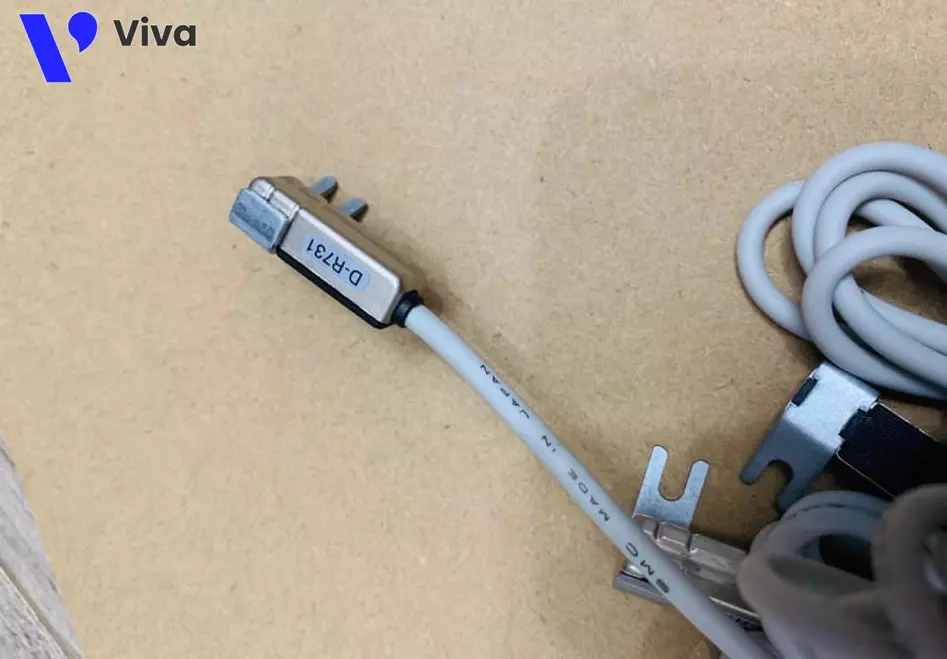Pneumatic cylinder sensor
Giá gốc là: 50.000 ₫.40.000 ₫Giá hiện tại là: 40.000 ₫.
Cập nhật lần cuối ngày 09/08/2023 lúc 03:55 chiều
Pneumatic cylinder sensors are regularly used in conjunction with pneumatic cylinders in various applications, especially in complex systems with high automation. In this article, we will explore pneumatic cylinder sensor devices together.
Pneumatic Cylinder Sensors: What Are They?
Pneumatic cylinder sensors are devices commonly used in conjunction with pneumatic cylinders in many applications, especially in complex and highly automated systems. In this article, we will explore pneumatic cylinder sensors.
Pneumatic cylinder sensors are used to receive information about the stroke of the pneumatic cylinder. This signal is then transmitted to the control unit, based on pre-programmed instructions of the system. The control unit will then emit the appropriate operating signal to perform a specific function.
These sensors operate on electrical energy, mainly using direct current (DC) with voltages ranging from 10V to 28V or 5V to 30V. Devices that use alternating current (AC) power sources are less common.
There are two main types of sensors currently in use:
- Inductive sensors: This type of sensor is commonly used with pneumatic cylinders. They are fixedly installed on the cylinder body and work by sensing the magnetic field as the piston moves through that field. Inductive sensors are widely used in pneumatic cylinder devices.
- Optical sensors: This type of sensor is used in various applications, not limited to sensing the stroke of the cylinder. They are often mounted in a fixed position, where the working stroke of the cylinder blocks the path of the light beam emitted by the sensor. By collecting the reflected light beam, they provide signals about the operating state of the pneumatic cylinder.

Why is Pneumatic Cylinder Sensor Used?
As you may already know, pneumatic cylinders are devices that are almost present in every industrial pneumatic system. They are often used not individually but in combination with various mechanisms and sensors to enhance automation in production processes, and sensors are among them.
Using pneumatic cylinder sensors in a system helps gather information about the cylinder’s stroke and convert it into electrical signals. These signals can be used for various purposes, including system monitoring, controlling a specific device or component within the system, or simply adjusting the operation of the cylinder itself.
Proper Installation of Sensors
In order for pneumatic cylinder sensors to function correctly according to their designed purpose, these devices need to be installed properly. The installation process may vary depending on the type of cylinder.
Firstly, to ensure proper installation, it is necessary to choose a sensor type with the appropriate functionality and structure that matches the body of the pneumatic cylinder.
There are several different installation methods that can be applied to this product, including:
- Using clamps: Firstly, the sensor is placed on the cylinder body, determining the suitable position and temporarily securing it. Then, a metal clamp is used to connect the cylinder and the sensor together.
- Using positioning screws: Many sensors are designed with built-in positioning screw details on their body. The sensor is inserted into the cylinder body through pre-designed slots, and to secure the sensor, a screw is tightened on the positioning screw detail.

Find Pneumatic Cylinder Sensors at Viva
If you are having difficulty finding a supplier for pneumatic cylinder sensors, VIVA Industrial Equipment and Technical Corporation can be a worthwhile option to consider.
Here, we offer a wide range of sensor types that are suitable for various types of pneumatic cylinders. Our products are 100% genuine and directly imported from reputable brands that are well-known in the Vietnamese market, such as Airtac, SMC, Festo, and more.
In addition, to meet the needs of customers nationwide, we collaborate with reliable transportation companies. Along with that, our dedicated staff are ready to provide enthusiastic consultation and introduce products that meet both quality and cost requirements. We guarantee that the products received by customers are in accordance with the agreed terms.
Lastly, all the sensor devices we provide come with appropriate warranty policies, ranging from 6 to 12 months depending on the product type.

Chưa có bình luận nào












Đánh giá Pneumatic cylinder sensor
Chưa có đánh giá nào.